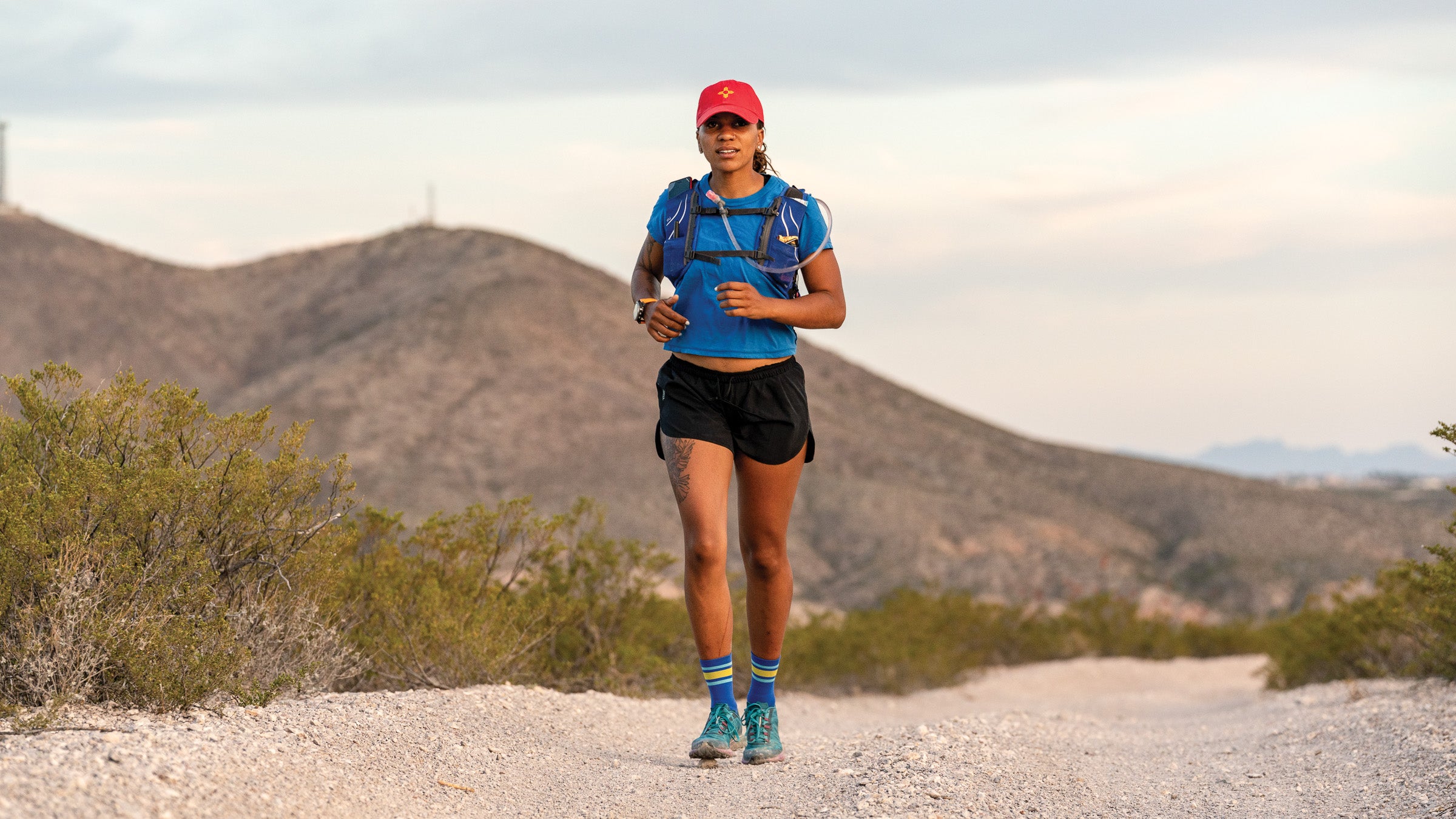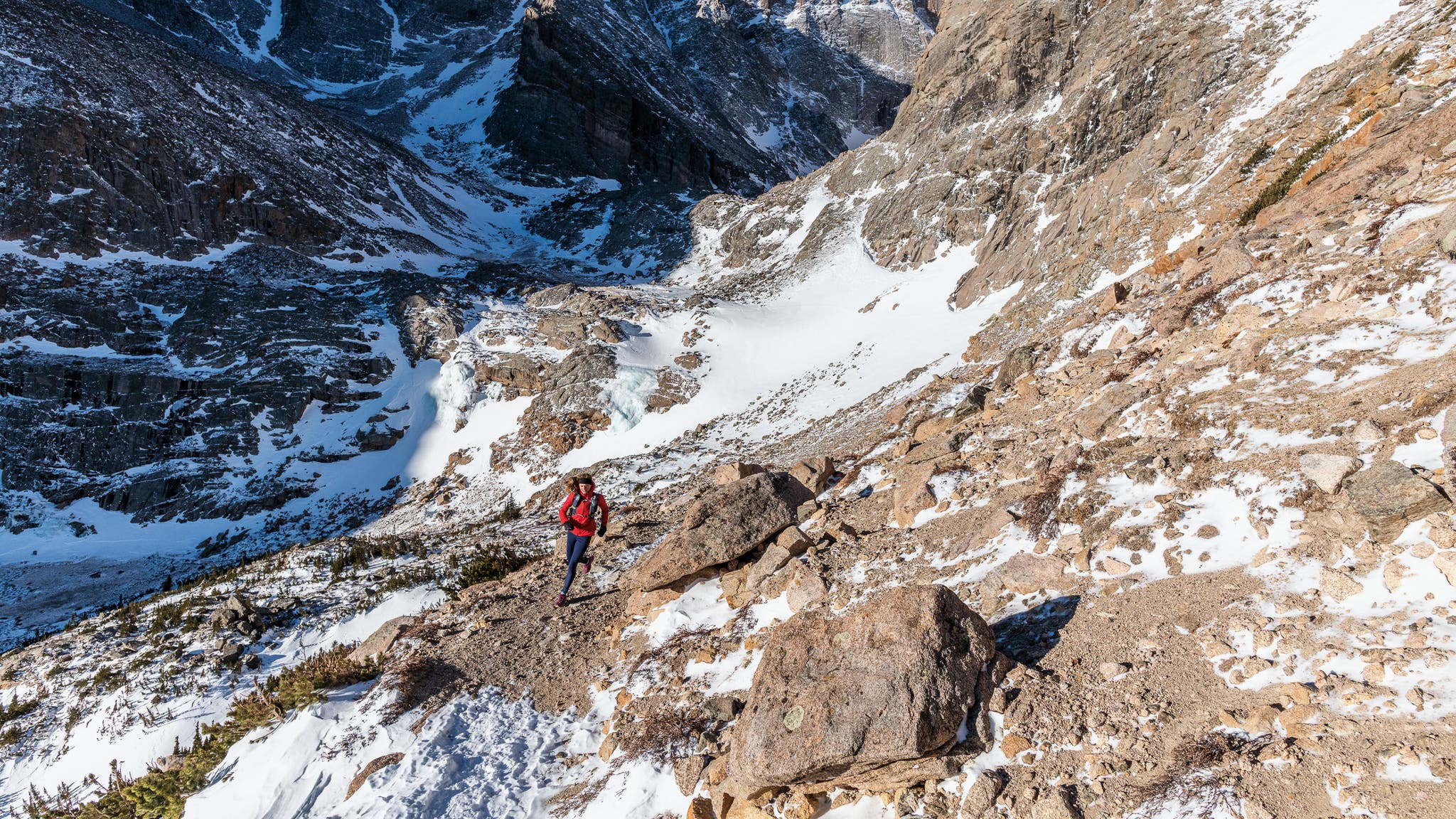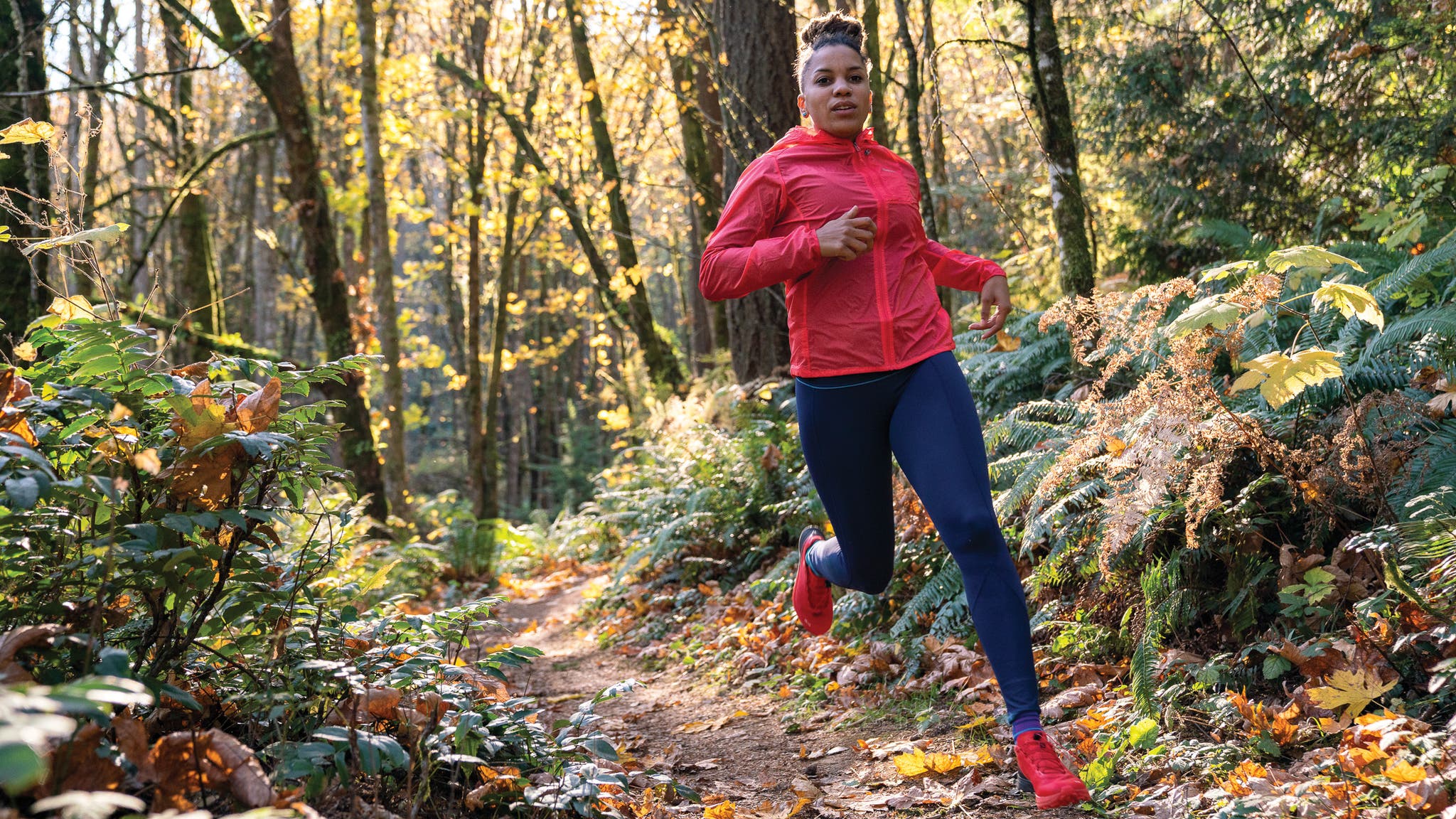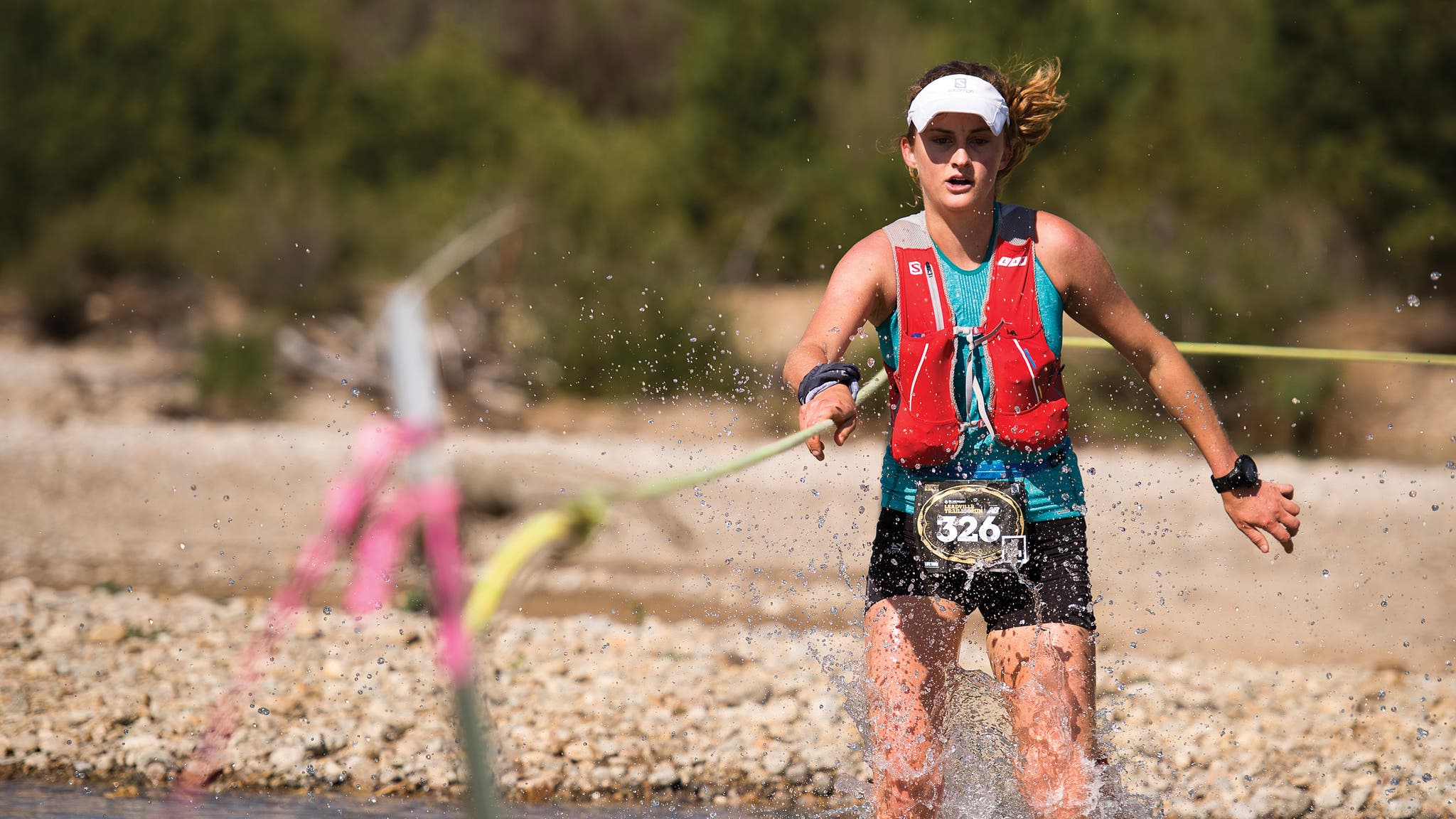Running Toward Change

(Photo: Michael A. Estrada)
For as much educating and advocating about climate change as ultrarunners Faith E. Briggs and Clare Gallagher have done, maybe the best way to teach the public about crucial environmental issues is to give everybody an unfortunate taste of what an ailing planet can do to civilization. Cue 2020. We’ve lived through a pandemic, massive unemployment, economic downturn, a strained health care system, murder hornets… the list goes on. Police brutality reignited the Black Lives Matter movement with increased vigor and attention to racial injustices around the world.
The connection may not always seem clear, but experts argue that you don’t have to dig too far to see how one thing leads to the other—and why many of our societal problems are tied to how we take care of our environment.
According to the Harvard School of Public Health, if we want to prevent the next pandemic, climate action is imperative for a number of reasons. Decreasing deforestation, for example, would prevent animals like bats from seeking new habitats, which would help lower the spread of infectious diseases like coronavirus. Reducing greenhouse gas emissions decreases the risks of strokes, heart attacks, diabetes, and obesity—which disproportionately affect Black, Indigenous, and people of color (who also often have less access to health care). Improving air pollution keeps the population’s lungs healthier, which protects us from respiratory infections.
“If you look at why people in the U.S. are not healthy at baseline, it has to do with our diets, pollution, and climate change,” according to Harvard’s research at the Center for Climate, Health, and the Global Environment. “We have the opportunity here to recognize that prevention is by far the best approach to protecting health.”
Gallagher, who is the reigning Western States Endurance Run champion, has been a dedicated environmental activist for years, but it wasn’t until 2020 that she recognized how much she still had to learn and evolve.
“The last few months have been the most seminal in my life and a huge slap in the face; climate activists as a whole needed to realize how environmental justice is a racial justice issue,” she says. “We cannot pretend like Black and brown and low-income communities aren’t experiencing the worst impacts of climate change, of air pollution, and lack of access to open space. It’s all intertwined.”
Gallagher and Briggs are among the runners who are trying to help connect the dots during the lead up to election day on November 3, in the hope that more people will at the very least educate themselves on climate policies happening on the local, state, and federal levels, and more importantly, head to the polls (or cast their ballots by mail).
The duo has also joined forces with Protect Our Winters (POW), an organization that encourages members of the outdoor sports community to “protect the places and lifestyles they love from climate change,” providing resources for voting, campaigns, and reading up on policy. The shared passions for recreation make environmental advocacy an issue that crosses party lines, they say. An estimated 57 million outdoor enthusiasts create $887 billion in economic revenue—making it “an industry with an economic impact that can’t be ignored.”
It’s been called the most important election of our lifetime. Complicated and divisive issues are on the line. From Gallagher’s and Briggs’s perspective, caring about the environment is a natural fit for runners, especially, who need clean air to breathe and public lands to traverse.
“We can’t afford to not vote,” Briggs says. “We really can’t afford to not be talking about politics. Get uncomfortable, because whoever is elected can make you really uncomfortable, so you may as well try to do something about it.”

Made for You and Me?
Briggs used to run the 400 meters—usually no more and no less. First as a high-school star in Hudson River Valley, New York, and then at Yale University, where she majored in African American studies and film, with a concentration on representation in media and documentary film. While she completed a master’s in journalism at New York University, Briggs started discovering longer distances on the roads with run crews like Black Roses NYC.
Her first long trail run was 15 miles in Brooklyn’s Prospect Park, off the beaten pavement path, but still in the comfort zone of the city.
“It had never occurred to me as a kid that running would exist outside of a track, that it could be done elsewhere,” Briggs says. “But I think moving to the trails helped me stay loving my sport. If I was just doing the same workouts I’d been doing in college, I’d probably have a lot of resentment.”
It was the dirt that led Briggs to Portland, Oregon, where she now resides. While working at Discovery Channel, she was chosen for a YouTube show that required her to relocate. During those nine months, she’d receive surprise adventures to complete for the show, including running 100K in the Andes Mountains before she had ever completed a marathon.
Briggs thought her stint in Oregon was temporary, but during that time she realized she was called to do more to protect public lands. “Out here in Oregon, I get consumed by this, but all of my friends in New York didn’t really know this was going on,” Briggs says. “I went from similarly not really knowing what was happening with mainstream conservation conversation in the United States to lobbying about it. It hadn’t been a lack of interest, it was a lack of familiarity and, I think, a lack of invitation. All of these things just became part of my everyday language in a way that they weren’t when I lived in New York.”
She and her friend Addie Thompson realized that most of their talks out on the trails revolved around what it’s like to run in the wilderness as women, and for Briggs, as a Black woman. They chatted about the lack of diversity and representation in outdoor spaces and why BIPOC populations don’t feel welcomed. They wanted to make a documentary that explored the intersection of all of these issues.
“What does it mean for me to move through this space that historically wasn’t for me?” Briggs says. “Those were topics that we wanted to bring into a film, in addition to the public lands conversation, in addition to national monuments. Nobody could really understand our vision, but in our minds, the way we move through the world, all these things are inextricably linked.”
This Land is a 10-minute film released this year that follows Briggs and her friends on a 150-mile run through three national monuments. It highlights the group’s diverse perspectives on the responsibilities of public land ownership, inclusion, and empowerment. The themes explored in the documentary have been amplified by current events.
In it, Briggs explains that when Brown v. Board of Education ended segregation in schools, it also set the precedent to end segregation on public lands. A consequence was the loss of Black state parks; at the time, Black Americans didn’t feel safe in inclusive outdoor spaces, so they weren’t included in conservation efforts for years to come.
“Historically, the movement has been really racist and prejudiced and some horrible things have been done to people of color, particularly the forced removal of Native people,” Briggs says. “But if we cast [the existing environmental movement] aside completely, we lose a lot of energy, a lot of experience, and longstanding organizational power. The power that already exists in the conservation space should be used in environmental justice. The more we lose older generations of white people who have been involved in conservation, the more that movement is going to shrink, shrivel, and fail if more people aren’t invited in—and it is essential that they invite in communities that have been historically marginalized.”
As Briggs continues to promote This Land, she also continues to encourage viewers to vote in the 2020 election. She also believes runners should pay close attention to their local elections and cast ballots just as carefully as they do for the national election, because most policies that are critical to the well-being of communities aren’t decided on the federal level.
“I think we can be a really powerful force for change if we work together as runners,” Briggs says. “We have the shared belief system through running and that gives me hope in some ways.”

It’s All Local
Gallagher decided at the end of 2019 that she wasn’t going to travel too far from home in 2020. It was a big switch for her after jet-setting for 180 days in 2019, including a packrafting and mountaineering trip in the Arctic National Wildlife Refuge, land under threat of oil drilling. But she felt like her journeys were not environmentally friendly and as the election neared, she had important work to do near her Boulder, Colorado, home.
Of course the pandemic solidified those stay-at-home plans, but it also opened up even more time to get involved in local politics. Gallagher has been advocating for an ordinance that would increase housing occupancy limits in Boulder, providing more opportunities for affordable housing.
“It’s one of those issues where the rubber meets the road. Like, how is our city upholding systemic racism? How is it preventing different people from moving into our city and allowing low-income workers to afford to live here?” she says, later adding, “And just to reiterate the point that everything is connected, whether it’s environmentalism or social justice: It all comes together in voting.”
Another major area: Gallagher is speaking primarily to people about voting for candidates who champion environmental policies—especially in swing states. She’s worked for years advocating for the Colorado Outdoor Recreation & Economy Act (CORE Act), which passed the House of Representatives but awaits action in the Senate. It establishes new wilderness areas and safeguards existing outdoor recreation opportunities.
“This is what I have to put all my eggs in. Some of the areas are in Summit County, which is where I first stepped foot in the mountains and it’s very personal. I know a lot of people whose entire livelihoods are based off of outdoor recreation in Colorado,” Gallagher says. “I’ve dug my heels in on this. It would protect 400,000 acres across Colorado in some really premiere outdoor recreational areas, helping small mountain town economies.”
It’s taken Gallagher a few years to fully learn and develop stances on local issues as opposed to the broad, sweeping environmental concerns on the national and global scale. She trusts that most people understand who their choices are for president, but it takes more education to figure out who to vote for in the Senate, House of Representatives, or for city council. But those decisions closer to home often matter more in policymaking than most of us realize.
Her mission until November, along with Briggs and through organizations like POW, is to rally more runners around a pretty simple concept: vote.
“If we think about how many people in America could be potential runners but aren’t because they live next to an oil refinery or a chemical plant and they have asthma, that’s really tragic,” Gallagher says. “I think we owe more to the running community at large and the future running community. Everybody has the right to breathe clean air, to drink clean water, and to run in open space. Stand up for those basic rights.”

How to Get Educated and Get Involved
Want to learn more or just want to find like-minded runners and outdoor enthusiasts? Plenty of organizations are ready to welcome runners into the fold. Here are just a few.
Runners for Public Lands
A recently established nonprofit organization promoting environmental stewardship in running communities.
Protect Our Winters
A community of athletes, scientists, creatives, and business leaders advancing nonpartisan policies that protect the world.
Black Girls Trekkin’
This group’s goal is to inspire and empower black women to spend time outdoors and appreciate (and protect) nature.
Diversify Outdoors
A coalition of influencers and activists who promote diversity in outdoor spaces where many identities have been underrepresented.